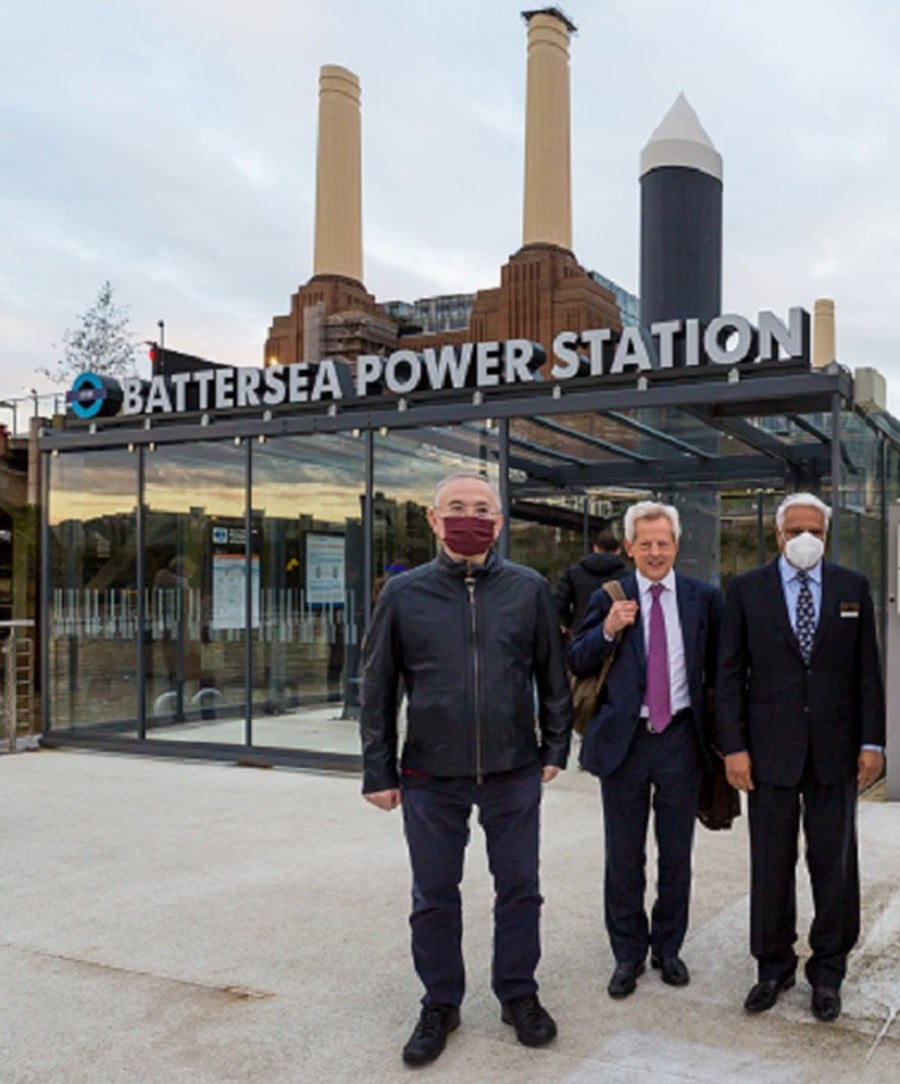By Sharen Kaur - Published in NST Property, October 18, 2021 
sharen@nst.com.my
The Battersea Power Station regeneration project in the United Kingdom, owned by a consortium of Malaysian firms, is gathering traction.
Not only did the Northern Line extension (NLE) open last month, the second phase of Battersea Power Station in Central London will welcome visitors next year, according to Battersea Power Station Development Company Ltd (BPSDC).
Over 100 stores, restaurants, and cafés, a 1,400-person capacity events hall, a unique chimney lift experience with 360-degree panoramic views of London's skyline, new office space, and 254 new residential units make up the second phase.
United Kingdom's (UK) Trade Envoy to Malaysia Richard Graham said it had been a long journey for the Malaysian investors and the Battersea Power Station team.
"There's now masses of light in the tunnel, and we can all see this will be Europe's most exciting new urban destination. The big opening in Jubilee Year 2022 will be a great moment for the UK and Malaysia to celebrate together," he said in a statement issued by Sime Darby Bhd.
Graham said his hope now is to form similarly successful project partnerships in Malaysia.
Sime Darby (40 per cent) is part of the consortium, also comprising S P Setia Bhd (40 per cent) and the Employees Provident Fund (20 per cent), redeveloping the Battersea Power Station, which is estimated to have a gross development value of £9 billion.
After being decommissioned in 1983, the former coal-fired Power Station sat idle for decades. In 2012, the Malaysian group won a competitive bid to redevelop the 15-hectare site for £400 million, making it the UK's largest property purchase.
Permodalan Nasional Bhd (PNB) has strategic investments in Sime Darby and S P Setia.
The business assets within the Power Station building are owned directly by PNB and the Employees Provident Fund.
Some 3.5 million square feet of mixed commercial space and 4,239 new dwellings, and 19 acres of public space will be created as part of the redevelopment project.
Datuk Seri Dr Wee Ka Siong, Malaysia's Transport Minister, recently visited the site and saw how the Malaysia-owned regeneration project had been transformed into a new, dynamic neighbourhood with a fully integrated public transport network.
The Battersea Power Station project, according to Wee, is an example of Malaysian companies' ability to produce and add value in regions outside of Malaysia, even bringing regeneration to zones that have been abandoned for decades while also being a good investment.
"As part of our tour, we were shown the project's impressive integration into public transport networks which we should look to emulate back home to help enhance accessibility and value for our key stakeholders," he said in the statement.

Wee was joined by Graham and welcomed by Battersea Project Holding Company (BPHC) chairman Datuk Jagan Sabapathy and BPSDC chief executive officer Simon Murphy.
He took the NLE and arrived at the complex via the brand-new Zone 1 Battersea Power Station underground station, which, according to BPSDC, got £300 million in developer contributions.
BPSDC claimed that the much-needed new public transportation infrastructure would benefit the entire community, including inhabitants, local companies, and the expected tens of millions of visitors.
"The enhanced transport links, which consist of a new Tube station, river bus service, buses and bikes, have not only unlocked accessibility for this part of London but also enabled socio-economic improvement opportunities for the community," it said.
No comments:
Post a Comment